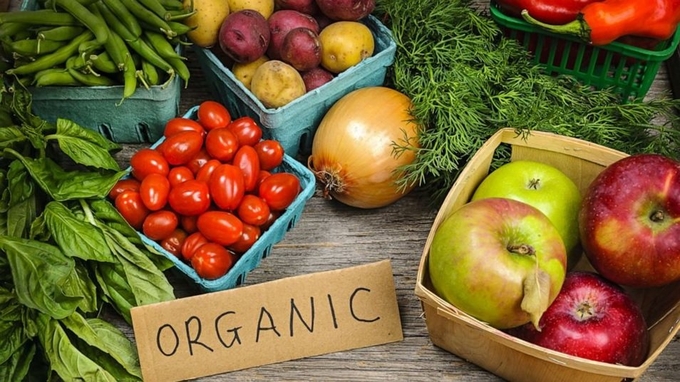November 27, 2025 | 17:38 GMT +7
November 27, 2025 | 17:38 GMT +7
Hotline: 0913.378.918
November 27, 2025 | 17:38 GMT +7
Hotline: 0913.378.918

Mr. Henry Bui from Hoan Vu Scientific Technology Company Limited.
At the Promoting digitalization in agro-product and food traceability forum held in Hanoi and Hochiminh city, February 28, Mr. Henry Bui from Hoan Vu Scientific Technology Company Limited (Hoan Vu STC Co., Ltd) introduces a new method in service of traceability through the presentation “Isotope ratio mass spectrometer for authenticity and provenance of agricultural products in Vietnam”.
Traceability is a very wide research topic, and Hoan Vu STC Co., Ltd mainly focuses on verifying the origin of agro-products. After 30 years in the field, Hoan Vu is confident in its ability to assist Vietnam’s agriculture. Hoan Vu Lab has tested and verified the origin of many fruit juices exported to the European market. The test results are equivalent to the labs in Germany.
Stable isotope analysis is a superior technique that is applied in many fields such as environment, climate, agriculture, geology, food, and biomedicine. Stable isotopes exist naturally and vary over time. each geographical location, each living organism. Therefore, the ratio of stable isotopes will provide information about the origin, origin, and characteristics of the research object such as H2/H1, O18/O16, C13/C12, N15/N14. The ratio of stable isotopes is often used to analyze traceability and determine the origin of organic compounds in environmental objects, food, agricultural products, food chains.
“I want to mention passion fruit, because considering the current stage of the market, if we cannot resolve the issues of added sugar, water and acid content, Vietnam’s passion fruit might have the EU market’s door closed, unable to import to countries in the area. Hoan Vu is one of the many units that are searching for ways to verify the origin of Vietnam’s passion fruit product and make sure that the export products show no anomaly,” said Mr. Henry Bui.

After 30 years in the field, Hoan Vu is confident in its ability to assist Vietnam’s agriculture.
Not only honey, through the analysis of stable isotope ratios (carbon, nitrogen, sulfur, oxygen, hydrogen) in agricultural products and foods, Hoan Vu is able to detect many cases of food fraud (mixing cheap oil into olive oil, diluting or increasing sweetness into fruit juice, determining the origin and geographical indication for meat, fish, dairy, agricultural products, etc.).
Stable isotope analysis technique has been paving the way for the era of authenticating the origin of agricultural products and all types of food in the world and Hoan Vu's use of this technique is proven through technological processes in the research subjects Hoan Vu have registered. Hoan Vu also determines the organic origin of dragon fruit, the substances added to fruit juices, distinguishes farmed black tiger shrimp from natural black tiger shrimp or determines the fertilizer used is of organic origin.
/2025/11/27/4910-4-164708_294.jpg)
(VAN) On the afternoon of November 27 in Beijing, Minister of Agriculture and Environment Tran Duc Thang held a working session with several major Chinese enterprises operating in the agriculture and environment sector.

(VAN) The Department of Animal Health issued a provisional guideline requesting local authorities to increase surveillance, collect samples for testing, and conduct epidemiological investigations according to the established procedure.

(VAN) The United Nations recommends that Vietnam utilize data and artificial intelligence to enhance early disaster warnings and reduce GDP losses by 3.2% in the context of climate change.

(VAN) On the morning of November 27 in Beijing, Minister Tran Duc Thang and the Deputy Commissioner General of the General Administration of Customs of China signed a protocol on fresh jackfruit exports.

(VAN) As floodwaters recede, a vast network of irrigation works across eastern Gia Lai is emerging in a state of severe disrepair, with extensive damage demanding urgent restoration ahead of the 2025-2026 winter-spring cropping season.

(VAN) The conference reviewing three years of implementing Decision 911 identified the need to prioritize improving marine environmental quality and promoting sustainable fisheries development.

(VAN) Le Hoai Trung, Member of the Communist Party of Viet Nam Central Committee and Minister of Foreign Affairs, held talks with Vi Thao, Chairman of the Guangxi Zhuang Autonomous Region (China) this week.